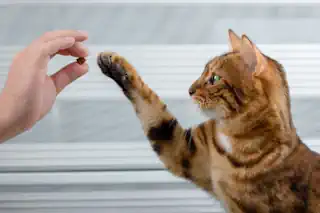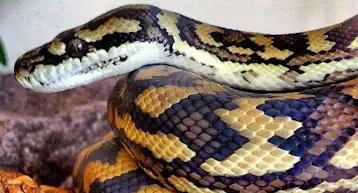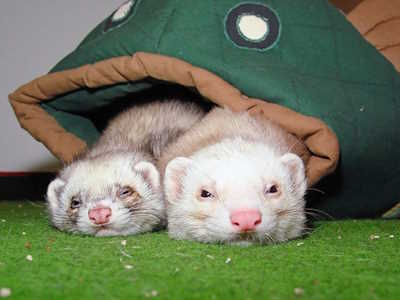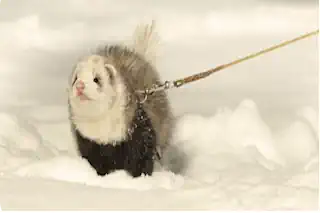A Useful Guide to Training Your Dog

Training your dog is an integral part of their development and plays a significant role in their pet health, their well-being and your relationship with them. Whether you have a brand new puppy or an older dog with some room for skill improvement, proper training helps your furry friend adapt to your home and become a well-behaved member of your household. This instructional post will guide you through essential training fundamentals, from understanding your dog to tackling more advanced skills.
Understanding Your Dog
Before jumping into training exercises, it’s crucial to decode your dog’s behavior. Dogs communicate through various signals, such as body language, vocalizations, and facial expressions. Observing and learning your dog’s unique communication style will establish a solid foundation for training.
Deciphering Body Language
Pay close attention to how your dog moves and behaves. A wagging tail doesn’t always mean happiness, just as a growl doesn’t always signify aggression. Note the context in which these signals occur, and you’ll start to understand what your dog is trying to convey.
Recognizing Stress and Anxiety
Pacing, panting, excessive licking, or avoidance behaviors can be signs of stress or anxiety. If you notice these in your dog, try to identify the source and provide comfort or remove the trigger.
Communication Back
React to your dog with your own body language. Mimic their play bows or relaxed stances to communicate that you’re receptive and understanding. This can deepen your bond and make training much more effective.
Basic Dog Training
The first set of commands every pup should learn are the basics – responding to their name, sitting, and staying. These commands form the basic foundation for the core structure of your communication and control over their behavior. Be sure to use verbal commands with hand signals.
Naming Your Dog
The “name game” teaches your dog to pay attention to you when you call. Say their name cheerfully and give a treat when they make eye contact. Consistently associate their name with positive experiences.
Teaching “Sit”
Use a treat to guide your dog’s nose up and their bottom down until they naturally sit. Immediately reward with a treat and a verbal cue like “good sit.” Practice this several times a day in short sessions.

Mastering “Stay”
Once sitting reliably, add the “stay” command and a hand signal, like a stop sign with your palm facing out. Begin by taking one step back then return and reward. Gradually increase the distance and time as they become more consistent.
Remember, keep training sessions short and positive. Over time, your dog will learn to sit and stay even in the face of distractions. Use basic cues your pet will understand at any time in any situation.
Advanced Dog Training
Advanced Training takes your dog beyond the basics, with more complex commands, techniques, and behaviors. This section focuses on teaching your dog to perform tasks with accuracy and reliability.
Advanced Commands
Move on to more advanced obedience commands, such as “down,” “stand,” and “leave it.” Use the same, positive reinforcement training methods as with the basic commands. This is a great time to introduce clicker training or mental stimulation with rewards hidden in puzzles.
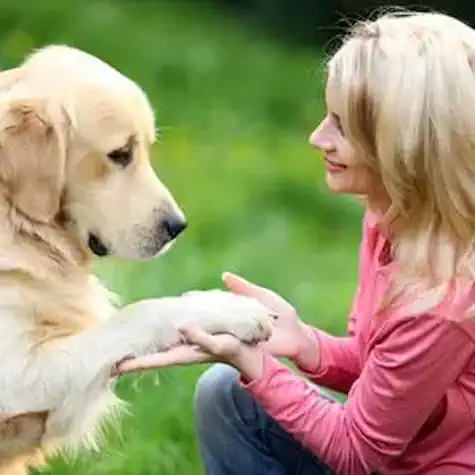
Fun Skills and Tricks to Train Your Dog
In addition to the basics, there are numerous fun and useful commands and tricks you can teach your dog. Expanding their repertoire can enhance their cognitive development and strengthen their bond. Here are 10 fun things to consider training your dog to do:
Fetch: Teach your dog to retrieve objects. This not only exercises their body but also their mind.
Shake Hands: A classic trick that impresses friends and family. It promotes gentle interaction with humans.
Roll Over: A fun trick that can be part of a larger routine or just a cute party trick.
Play Dead: Teach your dog to lie down and stay still on command, often followed by laughs and treats.
Spin: A simple trick where your dog learns to spin in a circle on command.
Speak: Teaching your dog to bark on command can actually help control excessive barking.
Quiet: Conversely, teaching your dog to be quiet on command is invaluable for managing noise.
Leave It: This command can prevent your dog from picking up dangerous items or stealing food.
High Five: Similar to “Shake hands” but with a bit more flair.
Crawl: Teach your dog to crawl on their belly. It’s not only cute but can also be a useful behavior.
Remember, patience and consistency are key. Every dog learns at their own pace, so celebrate the small victories and keep training sessions fun and rewarding.
Why Positive Reinforcement Works
Dogs, like people, enjoy being praised and rewarded. Positive reinforcement not only motivates your dog but also strengthens the bond between you both. Being a pet parent and training your dog should be quality time for both you and your pet.
The Right Reward
Understand what rewards matter to your dog. It could be a tasty treat, a game of fetch, or a belly rub. Use the reward that is most motivating for the behavior you want. Even if your new dog has learned bad habits from other pets or owners, take the time to learn and bond with your pet. A couple of months of bonding and observation will make your dog training much easier.
Consistency is Key
Be consistent with your commands and your rewards. Your dog should receive the same praise or treat for performing the behavior whether they’re at home or in a new environment.
Potty Training
Housebreaking a puppy can be one of the most challenging aspects of pet ownership, but with consistency, it can be achieved.
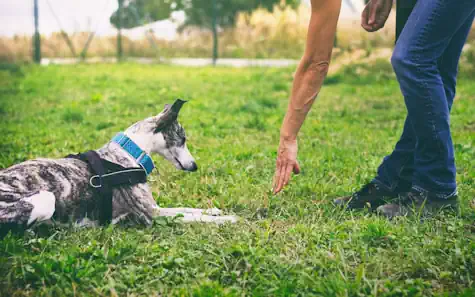
Establishing a Routine
Set regular feeding times and take your dog out on a schedule. This routine helps predict when they’ll need to relieve themselves. Always take your dog to the same spot and use a consistent command.
Reward and Reinforce
Immediately praise and offer a high-value treat when your dog eliminates in the correct spot with the correct command. Positive reinforcement shows them that they’ve done something good and will encourage them to repeat it.
Be Patient and Observant
Accidents are a normal part of the training process; don’t scold your dog for them. If you catch them in the act, interrupt them calmly and take them outside. With time, they’ll associate outdoors with potting.
Leash Training
Leash Training is about teaching your dog to walk calmly by your side without pulling or lunging. This skill requires patience and consistency but is essential for enjoyable walks for both of you.

The Introduction
Start by letting your dog familiarize themselves with the leash inside. Encourage them to follow you and reward them for doing so. This stage is about creating a positive association with the leash.
Attention is Key
Teach your dog that walking beside you is rewarding. Whenever they look at you or come back, reward them. Gradually phase out treats as they start to do it consistently.
Practice Makes Perfect
Take short walks in areas with minimal distractions. Gradually increase the duration and difficulty as your dog’s leash manners improve. Remain consistent with the training, and remember to be patient.
Crate Training
Crate training is a beneficial method to create a safe, cozy space for your dog and can greatly assist in house training and reducing anxiety. This training involves teaching your dog to see the crate as their own personal den, where they can feel secure and relaxed.

Choosing the Right Crate
Select a crate that is large enough for your dog to stand, turn around, and lie down comfortably, but not so large that they can use one end as a sleeping area and the other as a bathroom. Various types of crates are available, including wire, plastic, and soft-sided crates, each with its own set of advantages.
Introducing the Crate
Begin by placing the crate in a common area where the family spends a lot of time. Keep the door open and encourage your dog to explore the crate by placing treats and their favorite toys inside. Never force them into the crate; the goal is for them to voluntarily enter.
Feeding Meals in the Crate
Feeding your dog their meals inside the crate can help create a positive association. If they’re hesitant at first, place their food bowl near the crate and gradually move it inside as they become more comfortable.
Creating Positive Associations
Spend time playing with your dog near the crate and occasionally drop treats inside to encourage exploration. Praising them when they enter the crate on their own will reinforce this positive behavior.
Increasing Time Spent in the Crate
Once your dog is comfortably going into the crate for meals and treats, begin to close the door for short periods while you remain in the room. Gradually increase the time as they show signs of comfort, eventually leaving the room for brief periods and then for longer stretches.
Crate Training and Absence
For longer absences, ensure your dog has access to water. You might consider a heavy-duty water bowl that can’t be tipped over. Always provide ample exercise and potty breaks before longer crate times.
Safety and Comfort
Ensure the crate is a warm and inviting space with a comfortable bed or blankets. Avoid leaving items that could be harmful if chewed up, such as certain toys or chews, without supervision.
Crate training can take days or weeks, depending on your dog’s age, temperament, and past experiences. It’s crucial to keep the training positive and not use the crate as a punishment place. With patience and consistency, your dog will learn to love their crate as their own little safe space. This can be especially true for pets who suffer from separation anxiety.
Socialization
Socialization involves introducing your puppy to a variety of experiences, including people, animals, and environments, safely and positively. Be careful to monitor the time spent in socialization activities. Socialization is a very mentally stimulated scenario and can fatigue a pet quickly.

Early Exposure
Begin by exposing your puppy to different surfaces, sounds, and handling by various people. Always ensure the dog trainer and experiences are positive and not overwhelming.
Ongoing Socialization
Continue these experiences with pets throughout their first year and beyond. Regular interactions with different people and animals, especially early on, will help your dog grow into a well-adjusted adult dog.
Watch Their Reactions
Always observe how your dog interacts with other dogs in new situations. If they show signs of fear or stress, back off and try a gentler introduction. Socialization must be a positive learning experience for them.
Troubleshooting
Every dog learns at their own pace, and some may find certain commands more challenging than others. Here are a few common roadblocks and strategies for overcoming them.
Lack of Motivation
If your dog seems uninterested or unmotivated to train, it might be due to the training environment. Try a more engaging location or increase the value of the reward. A training class or private lessons might be the kick start to get your pup motivated.
Distractions
When your dog becomes distracted during short training sessions, it’s usually a sign that the distraction is more rewarding than the training. Increase the value of your rewards or reduce the level of distraction until your dog is ready to move up. Keep in mind your dogs’ attention span, especially when they are puppies, it may only be 10 to 15 minutes in length.
Fearfulness
Fear can interfere with your dog’s ability to learn. If your dog is hesitant about certain commands or behaviors, take a step back and work on building their confidence before progressing further.
Conclusion
Training your dog is an ongoing process that requires patience and dedication. The effort you put into teaching your dog will be rewarded with a loyal companion that you can trust and enjoy spending time with. Remember to keep training sessions positive, be consistent, and always use positive reinforcement. A well-trained dog is a happy dog, and a happy dog makes for a happy owner.
FAQ
How long should each training session last?
Keep training sessions short and sweet. For puppies, aim for 5-10 minutes, and for older dogs, 15-20 minutes is sufficient. It’s better to have multiple short, positive sessions throughout the day.
At what age can I start training my puppy?
Pet parents can start basic training as soon as your puppy comes home, usually around 8 weeks old. Focus on simple commands like “sit” and “stay”, and gradually introduce more complex commands as they grow.
How do I stop my dog from pulling on the leash?
Consistency and patience are key. Whenever your dog starts to pull, stop walking. Only continue when the leash is slack. You can also use treats to reward your dog when they walk nicely beside you.
What should I do if my dog is not food-motivated?
Find out what else your dog finds rewarding. Some dogs prefer toys, praise, or physical affection over food. Use these as rewards in your training sessions.
Can an old dog learn new tricks?
Absolutely! Older dogs can learn new commands and behaviors just like younger dogs. The process may take a little longer, but with patience and consistency, they can successfully learn.
What do I do if my dog regresses in their training?
Regression can happen for a variety of reasons. Take a step back in training, simplify the commands, and gradually build back up to where you were. Ensure you’re rewarding successful behaviors and always be patient and positive.
Is it better to attend group dog training classes or have one-on-one sessions with a trainer?
The choice between group training classes and one-on-one sessions depends on your dog’s personality, your training goals, and your budget. Group classes can be great for socialization, and teaching your dog to listen even with distractions around. They’re also more affordable and other dog owners will share training tips. One-on-one sessions, on the other hand, provide personalized attention and can be tailored to your dog’s specific needs, making them ideal for addressing particular behavioral issues or for dogs that don’t do well in group settings.
